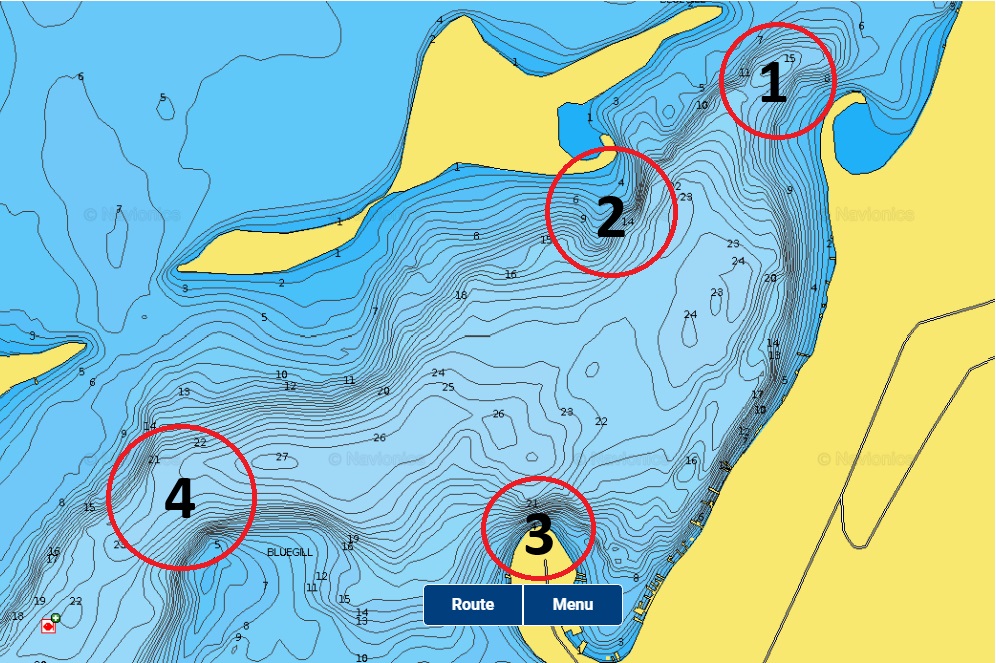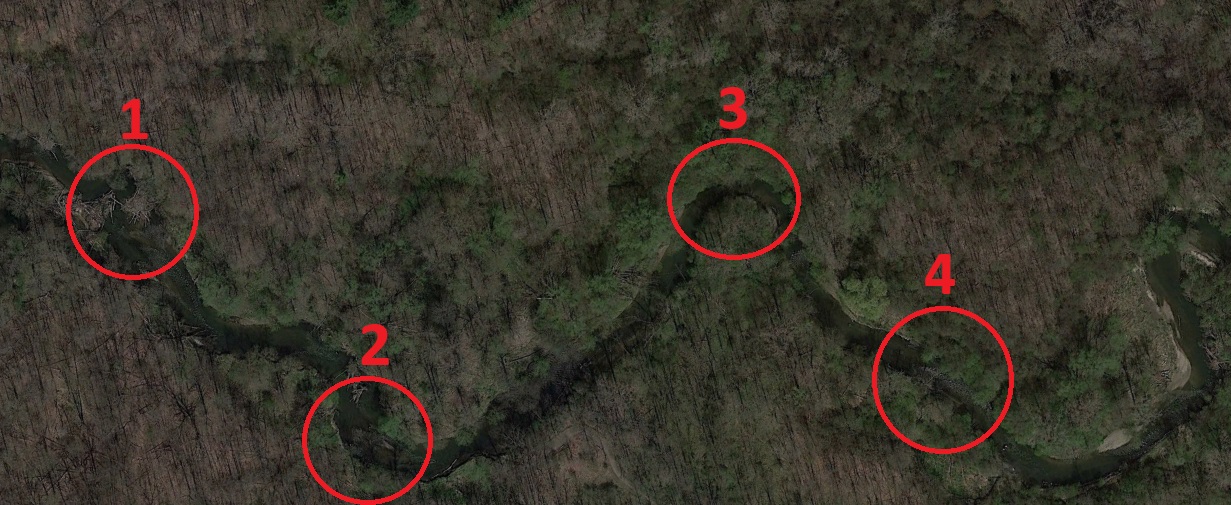Posted by Ian McDonnell on Dec 29th 2023
5 TIPS FOR WINTER OPEN WATER FISHING
Winter fishing is tough. Only fools fish during the winter before the ice. However, sometimes fishing before the hard water or in open water rivers can give anglers a shot at some awesome fishing. Winter open water fishing gives great opportunities for cold water species such as Steelhead, Walleye, Perch, Whitefish, Burbot, Smallmouth Bass, and Pike, as well as warm water species like Largemouth Bass, Crappie, and Bluegill. Many times, winter open water tactics differ and require a change in thought process. Utilizing the following tips, anglers can change the way they tackle fish during different times of year.
Tip #1 & #2: Lure Size
If you ask a room of seasoned wintertime anglers if they upsize or downsize their baits during the fall and winter, the room will split. On one side there are anglers who upsize their lure presentation and on the other side there are anglers who downsize. This tip could get a whole article in and of itself but here they are in two tips.
#1: Upsizing
The upsizing school of thought follows the idea that much of the years baitfish and forage species have grown over the course of the year and tend to be at their biggest size. Therefore, anglers will upsize bait profiles to match this.
As proof of this theory, take Bluegill as a forage base. Bluegill spawn throughout the summer months, so during this period, the Bluegill will be smaller on average than say during the winter months, when the Bluegills have had time to grow and others have died off.
#2: Downsizing
For the anglers who downsize during the fall and winter months, they use it as a way to generate more bites. In general, downsizing gets more bites because most fish feed on smaller bait, and smaller bait is usually in more abundance than larger bait, and smaller baitfish are an easier meal for a larger fish.
Good anglers fall on each side of this debate, but a great angler will take advantage of both and let the fish tell them to upsize or downsize. Many times, the forage present where you’re fishing might be bigger or smaller, and therefore anglers have to adjust lure size. Keep in mind, these two tips could be entire articles on their own. (Coming soon?)
Tip #3: Slow Down
Fish are cold-blooded, which means their body temperature is the same as the water around them. So, in winter when the water temperature is hovering around the upper to mid 30’s, fish metabolism slows down. Depending on the species of fish you’re targeting, they can be more or less tolerant to cold water. Some species have a more active metabolism in the colder water temperatures. Take the table below for example:
| Largemouth Bass | 55 Degrees |
| Smallmouth Bass | 45 Degrees |
| Walleye | 45 Degrees |
| Salmon | 40 Degrees |
| Steelhead | 38 Degrees |
| Lake Trout | 35 Degrees |
| Brook Trout | 35 Degrees |
| Pike | 45 Degrees |
| Bluegill | 50 Degrees |
| Perch | 45 Degrees |
Knowing this, anglers can make adjustments to the species of fish they’re fishing for depending on the temperature of the water. For example, Anglers targeting cold water species such as Steelhead, Lake Trout, or Brook Trout may find themselves fishing faster and warmer water tactics further into the winter than anglers targeting warmer water species such as Largemouth Bass.
When the water temperature drops below the fish’s cold-water threshold, it forces anglers to slow down. This may mean slower retrieve speeds or trolling speeds, or longer pause cadences on lure like jerk baits or spoons.
This may make winter fishing tedious and slow, but that will be solved with the next tip…
Tip #4: Target High Percentage Areas
On a given body of water, there are select areas that have a better chance at holding fish than other areas. During the winter in particular, fish tend to congregate in areas that give them easy access to food, cover, structure, and warmth. When looking at the body of water with a little attention to detail, one can point out these high percentage areas even before getting to the lake.
The idea behind targeting high percentage areas has to do with maximizing time in fish-populated areas. Generally in the winter, anglers fish slower, so in theory, the longer the lure or bait is in front of fish, the more successful an angler will be.
To find high percentage areas, look to obvious topographical points of interest. For example, points, coves, river bends, drop-offs, and undercut banks may all constitute high percentage areas. To visualize, look to the few examples below of a Michigan Inland Lake and river system.

- -Spot #1 is an underwater cove and a gateway into the flat to the northeast. Any fish trying to get to the flat will stage at this little cove.
- -Spot #2 and #3 are main lake points that interrupts the main bowl of the lake. Game fish will stage on these points during windy days, especially when there is a crosswind from the west.
- -
Spot #4 is a pinch point in the main bowl of the lake. Fish will travel along the drop-offs and stage in the middle of the pinch point.
See the following Michigan river example below:

- -Spot #1 is a laydown tree, an obvious staging point on this river system as laydowns slow down water and create slow water pools for fish refuge.
- -Spot #2 is a bend in the river with a deep-water hole. Deeper runs have slower moving water and more water over the fish’s head, making it a good staging area.
- -Spot #3 is a bend in the river with an undercut bank. The water on the undercut side of the bank (the north side) moves faster than the rest but creates a deep run. At the bottom of the deep run, the water is slower, and gamefish are easily able to ambush prey.
- -Spot #4 is a riffle, or shallow run of fast water. At the top and tail ends of this riffle, there will be a deeper hole with slower current. Regardless of the depth of this deep hole, fish will be in a great spot to ambush prey that washes off the fast, shallow run.
Looking at these examples with an eye for high percentage areas, these spots stand out just by looking at the topographical map. Many times, however, there are high percentage areas that may not be visible from a topographical map, such as weed beds, rocky shores, docks, and laydown trees. If anglers can find these features combined with the high percentage topographical areas, there’s a chance they may have discovered a fishing gold mine.
Tip #5: Stay Away from Braid
With many middle to even higher quality braids, cold weather can cause the braided line to freeze up on guides and in the reel, making an angler want to toss their rod and reel into the lake and pulling the drain plug on their boat.
There are a few braids that are good for cold water fishing, including Power Pro Super Slick V2, which is an 8-strand braid with a durable coating. If an angler is going to fish braid during winter months, a higher quality braid with a nice coating to prevent it from soaking up water is key.
For many anglers, Monofilament or Fluorocarbon tends to be favored during cold weather months.
To conclude, all these tips are useful for winter weather fishing and work together to create a successful day on the water. It takes time, and many days getting skunked to put together these tips and find a system that works for each angler. With these tips, anglers will be able to put together a solid game plan before they even get to the lake or river, then with a little intuition, make adjustments that can put together some awesome days of fishing.
Good luck, tight lines, and stay safe out there! No fish is worth dying over. When the water is below 45 degrees, it becomes very dangerous to take a fall in. Please wear a life jacket and take a buddy when fishing during cold water months. Best of luck!

